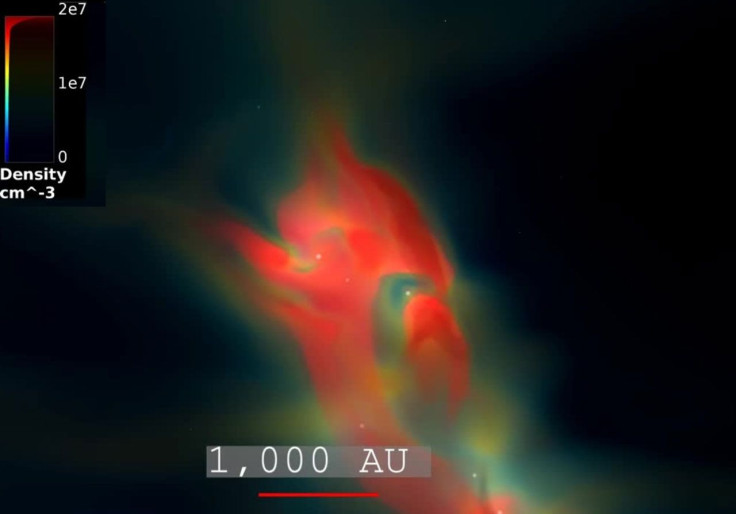Local Environments In Space Affect Formation Of Stars

In much the same way that the topography of a landscape will affect the shape and size of any human settlement that comes up on it, the formation of stars too is influenced by the local environments in the regions of space they happen to form in. This was the conclusion of a study by researchers from the Niels Bohr Institute (NBI) at the University of Copenhagen.
The basic principles at work behind the formation of stars can be explained using simple models, but the quantitative details require going beyond the simple models. And to do that, three NBI researchers “carried out computer simulations of the formation of hundreds of stars, from which nine carefully selected stars, representing various regions in space, were chosen for more detailed modeling,” according to a statement on the institute’s website.
Michael Küffmeier, lead author of the study that included Åke Nordlund and Troels Haugbølle, said simulations showed that local conditions “control the size of protoplanetary disks, and the speed at which star formations takes place — and no scientific study has ever shown this before.”
The researchers began with studying a giant molecular cloud, or GMC — massive regions in space that are dense with gas and dust, where star formation takes place. If put in a cube shape (as the researchers did for “computational reasons”), each side of the GMC would be 8 million times the Earth-sun distance, which is about 150 million kilometers. They identified nine specific stars for a closer look, and studied in particular the influence of magnetic fields and turbulence.
“Our most important result is that the accretion process is heterogeneous in multiple ways: in time, in space, and among protostars of otherwise similar mass. Accretion is heterogeneous in time, in the sense that accretion rates vary during the evolution, with generally decreasing profiles, whose slopes vary over a wide range, and where accretion can increase again if a protostar enters a region with increased density and low speed. Accretion is heterogeneous in space, because of the mass distribution, with mass approaching the accreting star–disk system in filaments and sheets. Finally, accretion is heterogeneous among stars, since the detailed conditions and dynamics in the neighborhood of each star can vary widely,” they wrote in the study.
Küffmeier added their work could also help improve our understanding of how planets form, especially as they make more realistic, quantitative models.
“One of the things we would like examine has to do with the fate of dust in protoplanetary disks — we want to know how dust and gas are separated, allowing in the end planets to form,” he elaborated in the statement.
They hope the launch of NASA’s James Webb Space Telescope in October, which will have the ability to capture information about the atmospheres of exoplanets, will help in their research, and also create a link between the environment where a planet forms and the exoplanet itself.
Titled “Zoom-in Simulations of Protoplanetary Disks Starting from GMC Scales,” the paper appeared in the Astrophysical Journal.
© Copyright IBTimes 2025. All rights reserved.




















